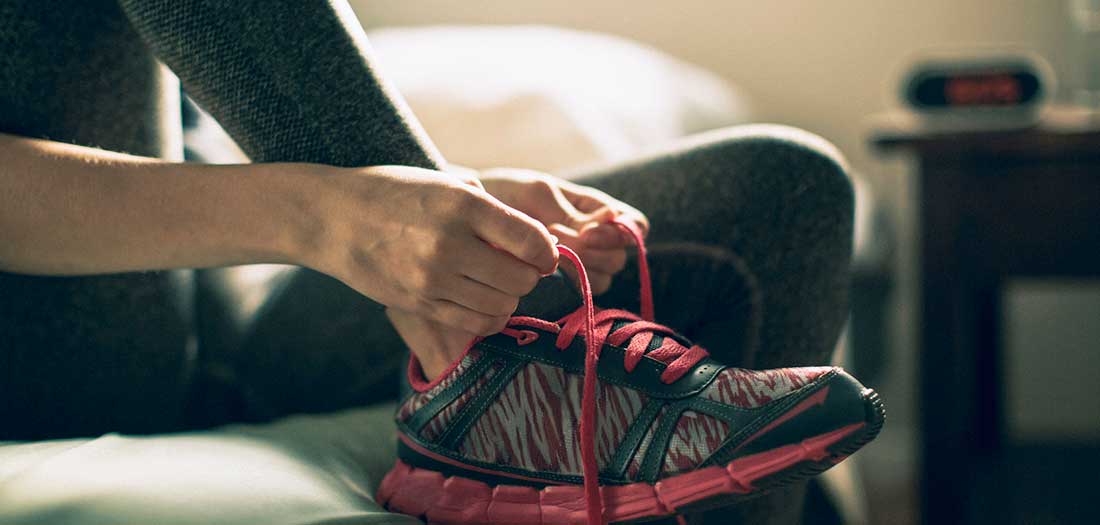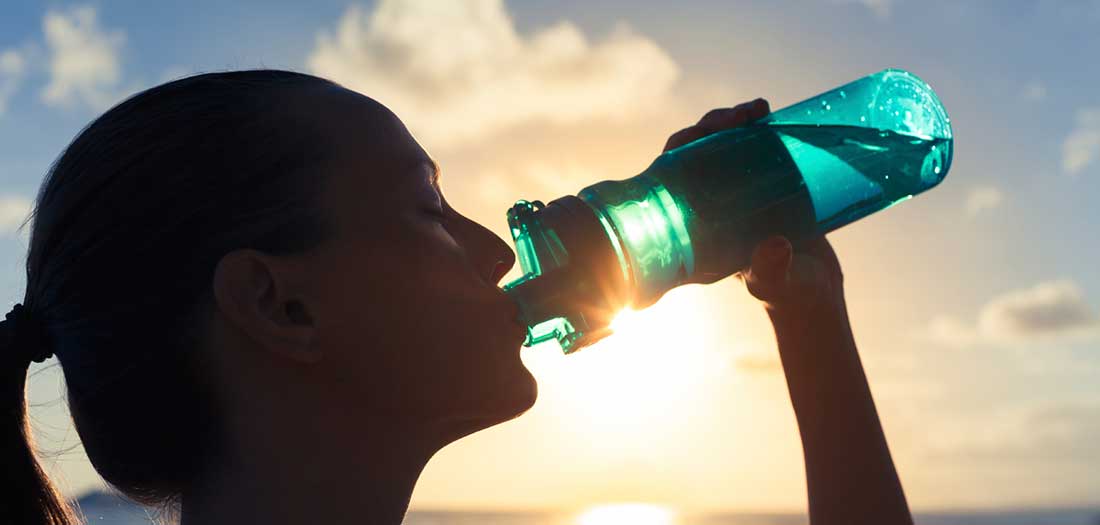For some people the summer heat is a welcome respite from the drudgery of winter, while for others it can feel downright oppressive, making outdoor exercise unbearable at best and dangerous at worst. The good news is that you don’t need to let the summer heat keep you from enjoying your favorite exercise program or physical activity. You just need to have a basic understanding of thermoregulation and know how to stay cool no matter what the thermometer says.
Thermoregulation is how your body controls its inner temperature, which is around 97 degrees Fahrenheit at rest. Physical activity, whether running an ultramarathon or walking the dog around the block, will elevate your body’s temperature, requiring the need for thermoregulation. Releasing excess water as sweat is one of the body’s thermoregulation mechanisms. But just why and how do we sweat?
Muscles store carbohydrates as glycogen. One molecule of glycogen can hold three to four molecules of water. As glycogen is converted to adenosine triphosphate (ATP) to fuel exercise, water is released. As the water moves to the surface of the skin it takes heat with it; as we sweat we are releasing excess heat from our bodies. This is why it’s necessary to stay properly hydrated during exercise in normal temperatures and critical to stay hydrated during hot weather—water is an important component of thermoregulatory processes.
It’s important to monitor your body weight during the warmer months of summer. When it’s hot outside losing weight as a result of sweating is not necessarily a good thing and could be an indicator of heat illness. Remember that up to 70 percent of your muscle tissue and blood are water. Excessive sweating that results in a loss of three to five percent of body weight could put you at risk for dehydration, which can impact normal thermoregulation. A loss of five percent or more of body weight due to sweating is an indicator of severe heat stress, which could be fatal.
Here are seven strategies for staying cool during summer workouts:
- Air conditioning, or proper air circulation, is the most effective means of controlling heat. If it’s not possible to exercise in an air-conditioned environment, then try to work out in an environment with proper air circulation. A cooler environment can make exercise during hot weather much more enjoyable as well as help your body maintain optimal thermoregulation.
- Exercise first thing in the morning before the heat sets in. You know it’s going to be a hot day when you take your first step outside and feel the heat before the sun is above the horizon. Even in this heat the early morning, when the sun is not directly overhead, can still be the coolest time of day. Two concerns with exercising in the evening are that asphalt or concrete surfaces can retain and give off heat, and a lack of daylight makes visibility (and safety) an issue. One way to beat the heat is to get your workout in before the sun is high in the sky.

- Wear moisture wicking tops. It can be tempting to shed clothing when it’s hot, but wearing a shirt can actually help you stay cooler because the sweat is being removed from the skin. The more efficiently water can be removed from the surface of your skin; the cooler you will stay during the workout.
- Limit heat exposure. This means that when it is hot outside you should not exercise in studios where the temperature is artificially elevated. The artificial heat in a hot studio, combined with normal summer heat, can cause long-term stress and damage to your body. Save the hot yoga for the winter months when you’ll want to be warm and toasty.

- Take an ice bath. If you play outdoor sports or have a long, hard outdoor training session in the heat one of the best ways to bring your core temperature down is by taking an ice bath. Ice baths are also an effective means of promoting muscle recovery, which can be important if you are participating in a multi-day tournament or want to train hard two days in a row. There’s a reason why football teams, from high school to professional level, use ice baths during summer two-a-days. They work! If you find an ice bath tough to bear, do what many football players do: wear a hoodie or sweatshirt. Yes, it will get wet but it can help you be more comfortable.
- Cold towels. If an ice bath isn’t available, a cold towel placed on your neck or wrists can help reduce core temperature and provide a cooling sensation. Keep a couple of small towels in your freezer at home or in a cooler if you’re at an outdoor event and use them to help you cool down quickly.

- One of the best ways to beat the heat is to stay properly hydrated. Make sure to drink water before, during and after your workouts. Here is a good rule of thumb for proper hydration: weigh yourself before and immediately after you exercise. For every pound of weight loss drink approximately one quart of water. Sports drinks with electrolytes like sodium or potassium can help you rehydrate more quickly, but they can also be high in calories so make sure to read the labels to know exactly how many calories are in each serving.
Remember that exercise is physical stress applied to the body. Heat adds extra stress but implementing these strategies can help you stay cool so you can keep moving all summer long. On days when the temperature spikes, adjust your workout accordingly and on days when the temperature is a little cooler, feel free to push a little harder.




 by
by 










 by
by